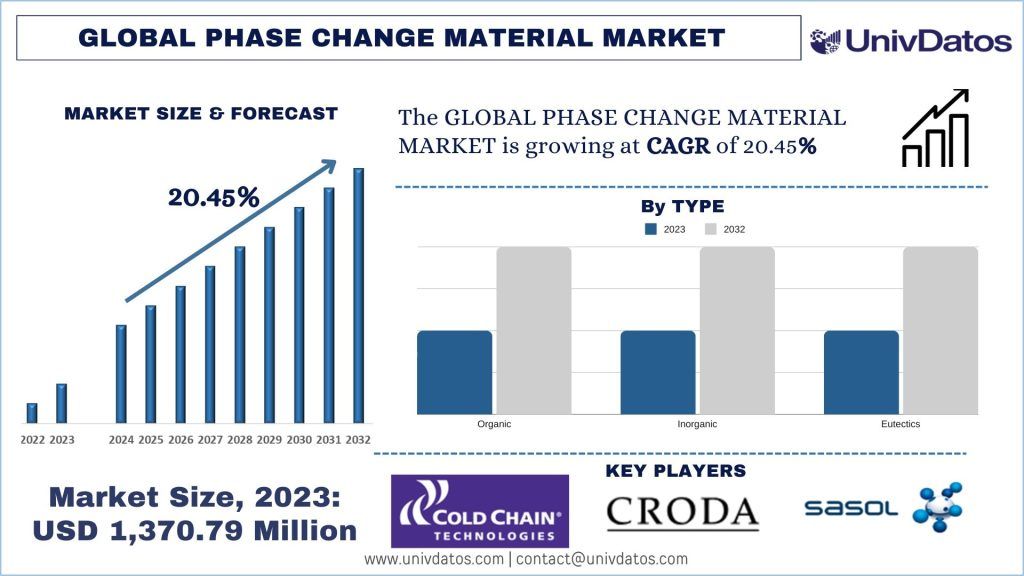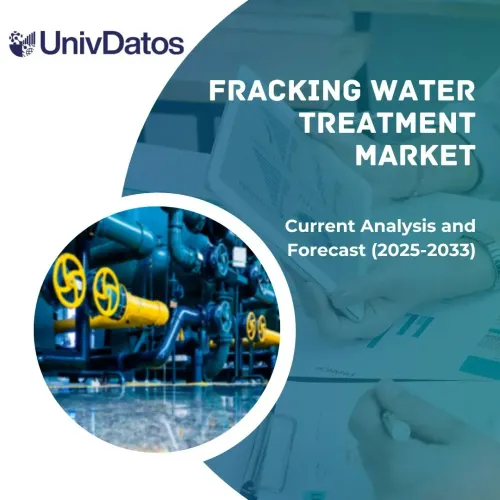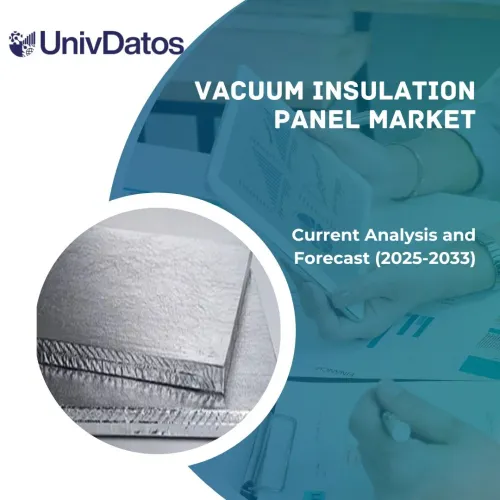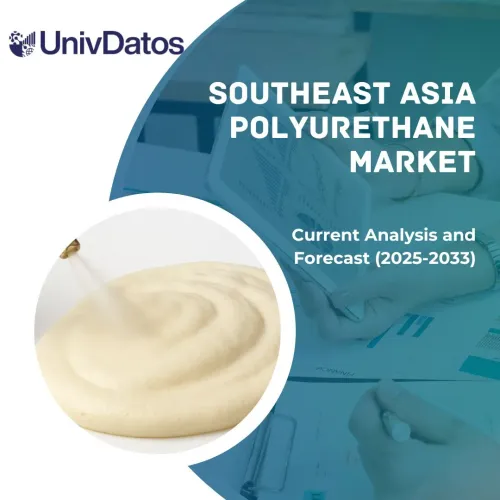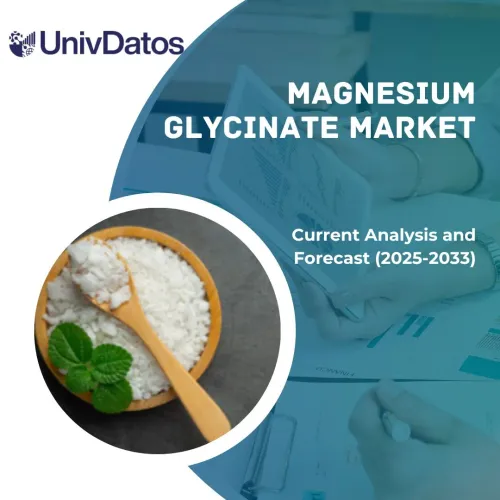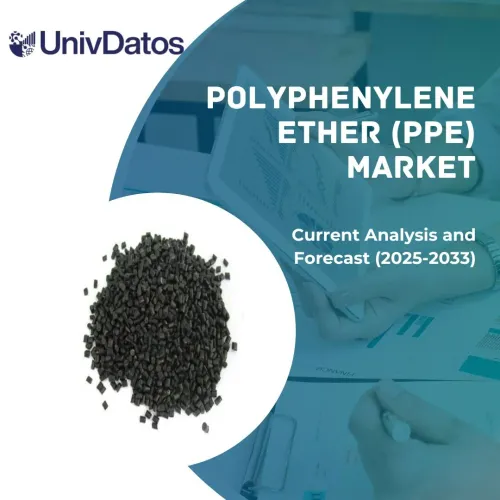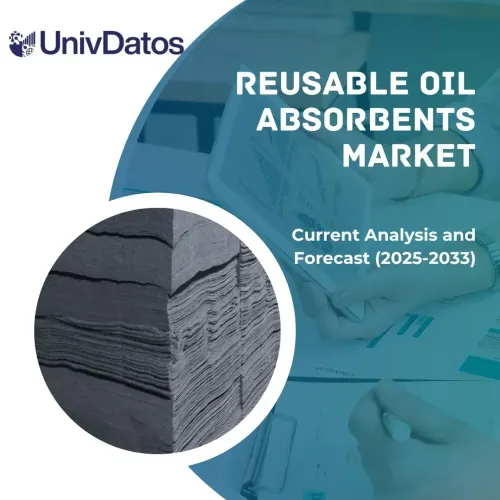- Trang chủ
- Về chúng tôi
- Ngành
- Dịch vụ
- Đọc
- Liên hệ với chúng tôi
Thị trường Vật liệu Thay đổi Pha: Phân tích Hiện tại và Dự báo (2024-2032)
Nhấn mạnh vào Loại (Hữu cơ, Vô cơ và Hỗn tinh); Ứng dụng (Xây dựng và Công trình, HVAC, Điện tử, Lưu trữ Năng lượng Nhiệt, Khác); và Khu vực/Quốc gia
Quy Mô & Dự Báo Thị Trường Vật Liệu Thay Đổi Pha
Quy mô thị trường vật liệu thay đổi pha được định giá 1.370,70 triệu USD vào năm 2023 và dự kiến sẽ tăng trưởng với tốc độ CAGR mạnh mẽ khoảng 20,45% trong giai đoạn dự báo (2024-2032) nhờ ứng dụng ngày càng tăng trong ngành xây dựng và công trình, giúp tiết kiệm năng lượng khổng lồ và giảm tác động đến môi trường. Ngoài ra, việc sử dụng rộng rãi xe điện trên toàn cầu cũng đóng vai trò là chất xúc tác chính cho thị trường vật liệu thay đổi pha.
Phân Tích Thị Trường Vật Liệu Thay Đổi Pha
Vật liệu thay đổi pha đã được coi là một vật liệu hiệu quả trong nhiều ngành công nghiệp để tiết kiệm năng lượng và tăng hiệu quả tổng thể. Xã hội hiện đại phụ thuộc nhiều vào năng lượng và mức tiêu thụ năng lượng sẽ tăng 48% vào năm 20240, theo Ủy ban Châu Âu. Với ngành xây dựng đang phát triển trên toàn cầu cũng đã thúc đẩy nhu cầu về vật liệu thay đổi pha. Khi ngành xây dựng bùng nổ, nhu cầu về hiệu quả năng lượng và sự thoải mái về nhiệt trong các tòa nhà đã tăng lên đáng kể trong vài năm qua. Các vật liệu này được sử dụng rộng rãi do khả năng lưu trữ và giải phóng năng lượng nhiệt trong quá trình chuyển pha, giúp điều chỉnh nhiệt độ trong nhà và giảm nhu cầu đối với các hệ thống sưởi ấm và làm mát thông thường. Do đó, điều này dẫn đến tiết kiệm năng lượng đáng kể cho các tòa nhà dân dụng và thương mại. Trong những năm gần đây, ngành xây dựng Trung Quốc đã nắm bắt các cơ hội do cuộc cách mạng công nghệ mới và chuyển đổi công nghiệp mang lại, nỗ lực nâng cao hiệu quả và giảm tiêu thụ năng lượng. Kết quả là, nó đã đạt được sự chuyển đổi và nâng cấp liên tục. Ví dụ, vào năm 2023, theo báo cáo do Cục Thống kê Quốc gia Trung Quốc công bố, ngành xây dựng là một trong những ngành trụ cột của nền kinh tế quốc dân Trung Quốc, với tổng giá trị sản lượng vượt quá 31 nghìn tỷ nhân dân tệ (4,34 nghìn tỷ USD) vào năm 2022, sử dụng hơn 52 triệu người. Do đó, các yếu tố trên đã tác động tích cực đến thị trường và dự kiến sẽ cho thấy sự tăng trưởng vượt bậc trong giai đoạn dự báo.
Xu Hướng Thị Trường Vật Liệu Thay Đổi Pha
Ứng Dụng Ngày Càng Tăng Trong Lĩnh Vực Ô Tô Để Quản Lý Nhiệt
Ứng dụng ngày càng tăng do việc sử dụng vật liệu thay đổi pha ngày càng tăng trong lĩnh vực ô tô để quản lý nhiệt có khả năng là một xu hướng nổi bật trên thị trường vật liệu thay đổi pha. Với việc sử dụng xe điện ngày càng tăng trên toàn cầu, gần 14 triệu xe điện mới đã được đăng ký vào năm 2023, nâng tổng số xe trên đường lên 40 triệu chiếc, tăng 35% so với năm 2022. Với việc điện khí hóa xe cộ, có một nhu cầu ngày càng tăng đối với các hệ thống quản lý nhiệt hiệu quả hơn để điều chỉnh nhiệt độ của pin, động cơ và các bộ phận quan trọng. Vật liệu thay đổi pha được biết đến với khả năng nhiệt tiềm ẩn vượt trội, hoạt động như chất hấp thụ nhiệt mà không làm tăng nhiệt độ đáng kể. Vật liệu này có thể giải phóng nhiệt bị giữ lại vào môi trường xung quanh khi không có nhiệt được truyền bên trong, làm cho chúng trở thành chất hấp thụ nhiệt có thể đảo ngược. Hơn nữa, PCM được coi là một trong những vật liệu tốt nhất để duy trì tính đồng nhất về nhiệt giữa các pin. Ngoài ra, sáp parafin là một vật liệu thay đổi pha phù hợp để sạc và xả pin với điểm nóng chảy khoảng 67 độ C, đủ thấp để giữ cho các ô pin trong một gói ở nhiệt độ thấp. Do đó, với việc triển khai PCM trong xe điện, có sự gia tăng tuổi thọ pin mà không cần PCM và cải thiện dung lượng năng lượng vì có thể truy cập 90% dung lượng pin danh định, thay vì 60% với làm mát bằng không khí.
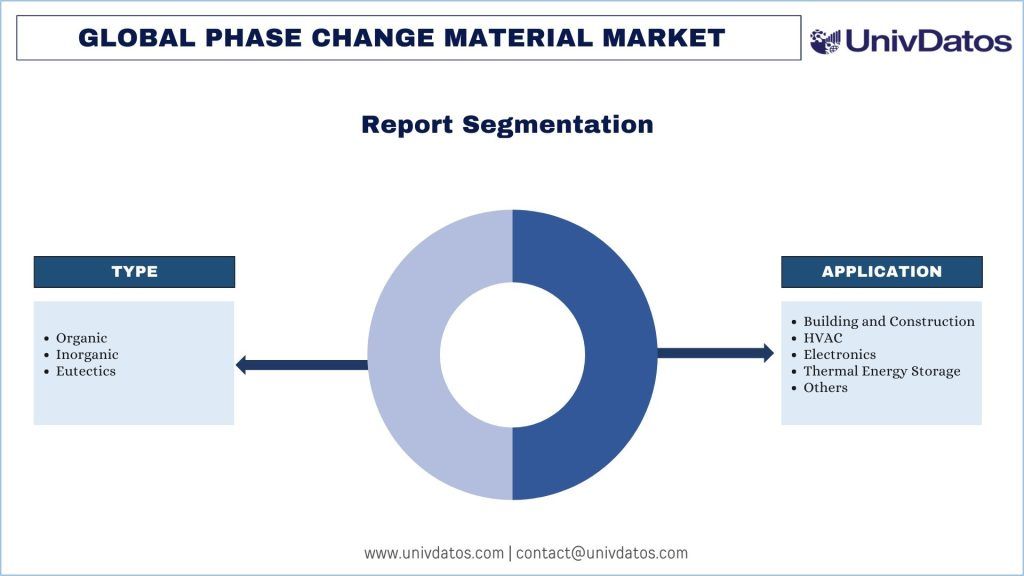
Châu Âu Thống Trị Thị Trường Vật Liệu Thay Đổi Pha
Thị trường vật liệu thay đổi pha ở Châu Âu có quy mô thị trường lớn nhất vào năm 2023 và dự kiến sẽ có tác động tương tự trong giai đoạn dự báo. Các yếu tố nổi bật góp phần vào sự tăng trưởng của khu vực bao gồm một ngành sản xuất phát triển tốt, với Đức là nhà sản xuất và xuất khẩu PCM hàng đầu. Đức có một ngành sản xuất rộng lớn cung cấp cho ô tô, hàng hóa công nghiệp, hóa chất, hàng không vũ trụ và quốc phòng, sử dụng một lượng lớn điện năng và làm tăng mức tiêu thụ năng lượng. Do đó, việc áp dụng PCM cải tiến đã là một yếu tố duy trì quan trọng cho sự thống trị của Châu Âu. Hơn nữa, sự tăng trưởng của ngành xây dựng đã thúc đẩy nhu cầu, chủ yếu là sự tập trung ngày càng tăng vào xây dựng xanh trong khu vực, điều này cũng đóng vai trò là chất xúc tác cho thị trường góp phần tối ưu hóa hệ thống sưởi ấm, thông gió và điều hòa không khí, dẫn đến sử dụng năng lượng hiệu quả hơn trong các tòa nhà. Ví dụ, theo Liên đoàn Công nghiệp Xây dựng Châu Âu (FIEC), đầu tư vào phân khúc xây dựng các tòa nhà phi dân cư đã tăng 2,1% vào năm 2022. Hơn nữa, nhiều sáng kiến của chính phủ đã được thực hiện để thúc đẩy và cải thiện việc áp dụng vật liệu thay đổi pha của khu vực. Ví dụ, Liên minh Châu Âu đã thực hiện sáng kiến "Tín dụng Carbon". Bằng cách kết hợp vật liệu thay đổi pha trong các ứng dụng như xây dựng và HVAC, các công ty sẽ kiếm được tín dụng carbon nhiều hơn từ 10 đến 20 lần so với việc sử dụng các vật liệu cách nhiệt xanh khác. Điều này đã khuyến khích hơn nữa việc áp dụng PCM và tiếp tục làm tăng nhu cầu trong khu vực.
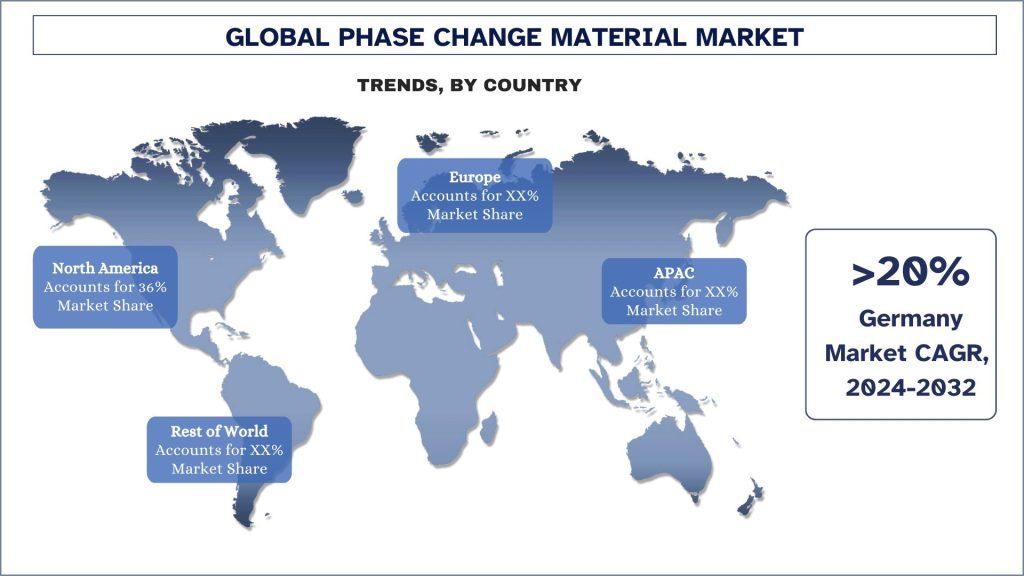
Tổng Quan Về Ngành Vật Liệu Thay Đổi Pha
Thị trường vật liệu thay đổi pha có tính cạnh tranh và tập trung cao, với một vài người chơi toàn cầu và quốc tế. Các công ty chủ chốt đang áp dụng các chiến lược tăng trưởng khác nhau để tăng cường sự hiện diện trên thị trường của họ, chẳng hạn như hợp tác, thỏa thuận, cộng tác, ra mắt sản phẩm mới, mở rộng địa lý và sáp nhập và mua lại. Một số công ty lớn hoạt động trên thị trường là Cold Chain Technologies, Croda International Plc, Sasol Limited, Honeywell International Inc., Boyd, PureTemp LLC, Outlast Technologies GmbH, Teappcm, Rubitherm Technologies GmbH và Climator Sweden AB.
Tin Tức Thị Trường Vật Liệu Thay Đổi Pha
- Vào tháng 6 năm 2024, Cold Chain Technologies, LLC đã khai trương một nhà máy sản xuất mới ở Breda, Hà Lan, để hỗ trợ hơn nữa việc mở rộng ở Châu Âu. Nhà máy đã được chọn làm trung tâm sản xuất và phân phối cho nhiều loại sản phẩm và dịch vụ của công ty ở Châu Âu. Nhà máy mới này sẽ sản xuất và cung cấp các giải pháp đảm bảo nhiệt tiên tiến bằng vật liệu thay đổi pha.
- Vào tháng 10 năm 2023, Cold Chain Technologies, LLC đã mua lại Exeltainer, một nhà cung cấp toàn cầu các giải pháp đóng gói nhiệt với các trung tâm sản xuất ở Tây Ban Nha và Brazil. Việc mua lại này đã cung cấp cho khu vực Châu Âu quyền tiếp cận danh mục giải pháp và dịch vụ rộng hơn từ CCT với lợi ích bổ sung là tìm nguồn cung ứng và sản xuất trong khu vực.
- Vào tháng 9 năm 2022, Sinomax USA đã ra mắt các công nghệ làm giường bằng bọt mới giải quyết nhiều vấn đề khác nhau, bao gồm khả năng giặt. Công nghệ làm mát vật liệu thay đổi pha có tên BioFrost, một công nghệ đầu tiên thuộc loại này được chứng nhận và phê duyệt bởi chương trình Bio-preferred của USDA, chứa tới 94% hàm lượng có nguồn gốc sinh học. Theo công ty, tỷ lệ nội dung này cao hơn bất kỳ chất phụ gia PCM nào khác trên thị trường.
Phạm Vi Báo Cáo Thị Trường Vật Liệu Thay Đổi Pha
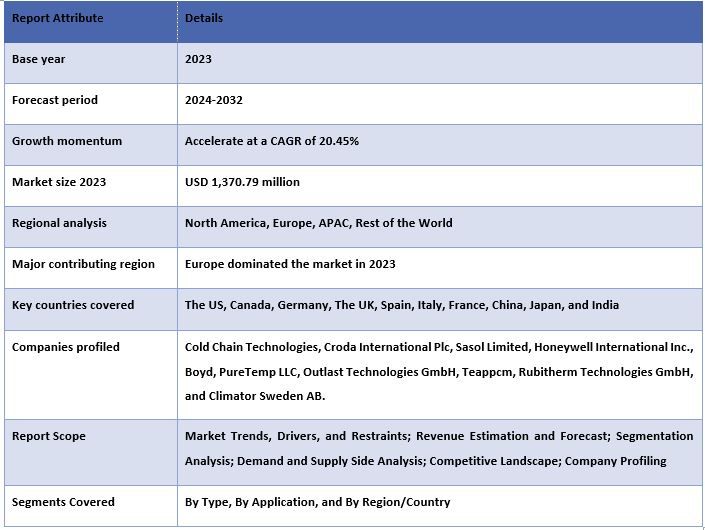
Lý Do Nên Mua Báo Cáo Này:
- Nghiên cứu bao gồm phân tích kích thước và dự báo thị trường được xác thực bởi các chuyên gia hàng đầu trong ngành đã được xác thực.
- Báo cáo trình bày đánh giá nhanh về hiệu quả hoạt động tổng thể của ngành trong nháy mắt.
- Báo cáo bao gồm phân tích chuyên sâu về các đồng nghiệp nổi bật trong ngành, tập trung chủ yếu vào tài chính kinh doanh quan trọng, danh mục sản phẩm, chiến lược mở rộng và các phát triển gần đây.
- Kiểm tra chi tiết các động lực, hạn chế, xu hướng chính và cơ hội thịnh hành trong ngành.
- Nghiên cứu bao gồm toàn diện thị trường trên các phân khúc khác nhau.
- Phân tích sâu cấp khu vực của ngành.
Tùy Chọn Tùy Chỉnh:
Thị trường vật liệu thay đổi pha toàn cầu có thể được tùy chỉnh thêm theo yêu cầu hoặc bất kỳ phân khúc thị trường nào khác. Bên cạnh đó, UMI hiểu rằng bạn có thể có nhu cầu kinh doanh riêng của mình, do đó, vui lòng liên hệ với chúng tôi để nhận được một báo cáo hoàn toàn phù hợp với yêu cầu của bạn.
Mục lục
Phương Pháp Nghiên Cứu cho Phân Tích Thị Trường Ván Sợi Mật Độ Trung Bình (2024-2032)
Phân tích thị trường lịch sử, ước tính thị trường hiện tại và dự báo thị trường tương lai của thị trường ván sợi mật độ trung bình toàn cầu là ba bước chính được thực hiện để tạo và phân tích việc áp dụng ván sợi mật độ trung bình ở các khu vực chính trên toàn cầu. Nghiên cứu thứ cấp chuyên sâu đã được thực hiện để thu thập các số liệu thị trường lịch sử và ước tính quy mô thị trường hiện tại. Thứ hai, để xác thực những thông tin chi tiết này, nhiều phát hiện và giả định đã được xem xét. Hơn nữa, các cuộc phỏng vấn sơ cấp chuyên sâu cũng đã được thực hiện, với các chuyên gia trong ngành trên toàn bộ chuỗi giá trị của thị trường ván sợi mật độ trung bình toàn cầu. Sau khi giả định và xác thực các số liệu thị trường thông qua các cuộc phỏng vấn sơ cấp, chúng tôi đã sử dụng phương pháp tiếp cận từ trên xuống/từ dưới lên để dự báo quy mô thị trường hoàn chỉnh. Sau đó, các phương pháp phân tích thị trường và phương pháp phân tích dữ liệu tam giác đã được áp dụng để ước tính và phân tích quy mô thị trường của các phân khúc và phân khúc con của ngành liên quan đến. Phương pháp luận chi tiết được giải thích dưới đây:
Phân Tích Quy Mô Thị Trường Lịch Sử
Bước 1: Nghiên Cứu Chuyên Sâu Các Nguồn Thứ Cấp:
Nghiên cứu thứ cấp chi tiết đã được thực hiện để thu thập quy mô thị trường lịch sử của thị trường ván sợi mật độ trung bình thông qua các nguồn nội bộ của công ty như báo cáo thường niên & báo cáo tài chính, các bài thuyết trình về hiệu suất, thông cáo báo chí, v.v. và các nguồn bên ngoài bao gồm tạp chí, tin tức & bài viết, ấn phẩm của chính phủ, ấn phẩm của đối thủ cạnh tranh, báo cáo ngành, cơ sở dữ liệu của bên thứ ba và các ấn phẩm đáng tin cậy khác.
Bước 2: Phân Khúc Thị Trường:
Sau khi thu thập quy mô thị trường lịch sử của thị trường ván sợi mật độ trung bình, chúng tôi đã tiến hành phân tích thứ cấp chi tiết để thu thập thông tin chi tiết về thị trường lịch sử và chia sẻ cho các phân khúc & phân khúc con khác nhau cho các khu vực chính. Các phân khúc chính được bao gồm trong báo cáo theo loại và ứng dụng. Hơn nữa, các phân tích cấp quốc gia đã được tiến hành để đánh giá việc áp dụng chung các mô hình thử nghiệm ở khu vực đó.
Bước 3: Phân Tích Yếu Tố:
Sau khi có được quy mô thị trường lịch sử của các phân khúc và phân khúc con khác nhau, chúng tôi đã tiến hành phân tích yếu tố chi tiết để ước tính quy mô thị trường hiện tại của thị trường ván sợi mật độ trung bình. Hơn nữa, chúng tôi đã tiến hành phân tích yếu tố bằng cách sử dụng các biến phụ thuộc và độc lập như loại và ứng dụng của thị trường ván sợi mật độ trung bình. Một phân tích kỹ lưỡng đã được thực hiện cho các kịch bản cung và cầu có xét đến các quan hệ đối tác hàng đầu, sáp nhập và mua lại, mở rộng kinh doanh và ra mắt sản phẩm trong lĩnh vực thị trường ván sợi mật độ trung bình trên toàn cầu.
Ước Tính & Dự Báo Quy Mô Thị Trường Hiện Tại
Xác định quy mô thị trường hiện tại: Dựa trên những thông tin chi tiết hữu ích từ 3 bước trên, chúng tôi đã xác định được quy mô thị trường hiện tại, những người chơi chính trong thị trường ván sợi mật độ trung bình toàn cầu và thị phần của các phân khúc. Tất cả các tỷ lệ phần trăm cần thiết và phân tích thị trường đã được xác định bằng cách sử dụng phương pháp thứ cấp đã đề cập ở trên và đã được xác minh thông qua các cuộc phỏng vấn sơ cấp.
Ước tính & Dự báo: Để ước tính và dự báo thị trường, trọng số đã được gán cho các yếu tố khác nhau bao gồm các động lực & xu hướng, hạn chế và cơ hội có sẵn cho các bên liên quan. Sau khi phân tích các yếu tố này, các kỹ thuật dự báo có liên quan, tức là phương pháp tiếp cận từ trên xuống/từ dưới lên đã được áp dụng để đưa ra dự báo thị trường cho năm 2032 cho các phân khúc và phân khúc con khác nhau trên các thị trường lớn trên toàn cầu. Phương pháp nghiên cứu được áp dụng để ước tính quy mô thị trường bao gồm:
- Quy mô thị trường của ngành, về doanh thu (USD) và tỷ lệ áp dụng của thị trường ván sợi mật độ trung bình trên các thị trường lớn trong nước
- Tất cả các tỷ lệ phần trăm, phân chia và phân tích của các phân khúc thị trường và phân khúc con
- Những người chơi chính trong thị trường ván sợi mật độ trung bình toàn cầu về các sản phẩm được cung cấp. Ngoài ra, các chiến lược tăng trưởng được các công ty này áp dụng để cạnh tranh trên thị trường đang phát triển nhanh chóng.
Xác Thực Quy Mô và Thị Phần Thị Trường
Nghiên Cứu Sơ Cấp: Các cuộc phỏng vấn chuyên sâu đã được thực hiện với những Người Có Ý Kiến Chủ Chốt (KOL) bao gồm các Giám Đốc Điều Hành Cấp Cao (CXO/VPs, Trưởng Phòng Kinh Doanh, Trưởng Phòng Marketing, Trưởng Phòng Vận Hành, Trưởng Khu Vực, Trưởng Chi Nhánh, v.v.) trên khắp các khu vực chính. Các phát hiện nghiên cứu sơ cấp sau đó đã được tóm tắt và phân tích thống kê đã được thực hiện để chứng minh giả thuyết đã nêu. Thông tin đầu vào từ nghiên cứu sơ cấp đã được hợp nhất với các phát hiện thứ cấp, do đó biến thông tin thành những hiểu biết sâu sắc có thể hành động.
Phân Chia Người Tham Gia Sơ Cấp ở Các Khu Vực Khác Nhau
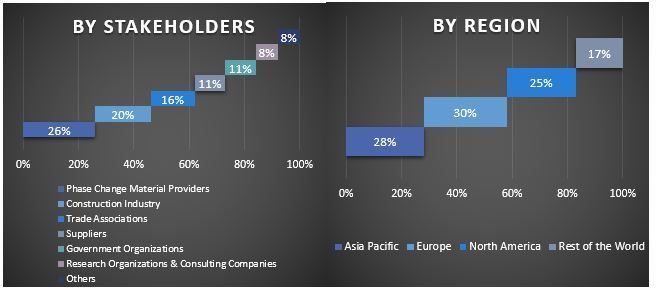
Kỹ Thuật Thị Trường
Kỹ thuật phân tích dữ liệu tam giác đã được sử dụng để hoàn thành việc ước tính thị trường tổng thể và để đưa ra các số liệu thống kê chính xác cho từng phân khúc và phân khúc con của thị trường ván sợi mật độ trung bình toàn cầu. Dữ liệu được chia thành nhiều phân khúc & phân khúc con sau khi nghiên cứu các thông số và xu hướng khác nhau trong các lĩnh vực loại và ứng dụng trong thị trường ván sợi mật độ trung bình toàn cầu.
Mục tiêu chính của Nghiên Cứu Thị Trường Ván Sợi Mật Độ Trung Bình Toàn Cầu
Các xu hướng thị trường hiện tại & tương lai của thị trường ván sợi mật độ trung bình toàn cầu đã được xác định chính xác trong nghiên cứu. Các nhà đầu tư có thể có được những hiểu biết sâu sắc về chiến lược để làm cơ sở cho sự lựa chọn của họ đối với các khoản đầu tư dựa trên phân tích định tính và định lượng được thực hiện trong nghiên cứu. Các xu hướng thị trường hiện tại và tương lai xác định sức hấp dẫn tổng thể của thị trường ở cấp độ khu vực, cung cấp một nền tảng cho người tham gia công nghiệp khai thác thị trường chưa được khai thác để hưởng lợi từ lợi thế của người đi đầu. Các mục tiêu định lượng khác của các nghiên cứu bao gồm:
- Phân tích quy mô thị trường hiện tại và dự báo của thị trường ván sợi mật độ trung bình về giá trị (USD). Ngoài ra, hãy phân tích quy mô thị trường hiện tại và dự báo của các phân khúc và phân khúc con khác nhau.
- Các phân khúc trong nghiên cứu bao gồm các lĩnh vực loại và ứng dụng.
- Xác định và phân tích khung pháp lý cho ván sợi mật độ trung bình
- Phân tích chuỗi giá trị liên quan đến sự hiện diện của các trung gian khác nhau, cùng với việc phân tích hành vi của khách hàng và đối thủ cạnh tranh trong ngành.
- Phân tích quy mô thị trường hiện tại và dự báo của thị trường ván sợi mật độ trung bình cho khu vực chính.
- Các quốc gia lớn của các khu vực được nghiên cứu trong báo cáo bao gồm Châu Á Thái Bình Dương, Châu Âu, Bắc Mỹ và Phần còn lại của Thế giới
- Hồ sơ công ty của thị trường ván sợi mật độ trung bình và các chiến lược tăng trưởng được những người chơi trên thị trường áp dụng để duy trì thị trường đang phát triển nhanh chóng.
- Phân tích sâu cấp khu vực của ngành
Câu hỏi thường gặp Câu hỏi thường gặp
Câu hỏi 1: Quy mô thị trường hiện tại và tiềm năng tăng trưởng của thị trường vật liệu thay đổi pha là gì?
Q2: Đâu là những yếu tố thúc đẩy sự tăng trưởng của thị trường vật liệu thay đổi pha?
Q3: Phân khúc nào có thị phần vật liệu thay đổi pha lớn nhất theo Loại?
Câu hỏi 4: Các công nghệ và xu hướng mới nổi trong thị trường vật liệu thay đổi pha là gì?
Câu hỏi 5: Khu vực nào sẽ thống trị thị trường vật liệu biến đổi pha?
Liên quan Báo cáo
Khách hàng đã mua mặt hàng này cũng đã mua

